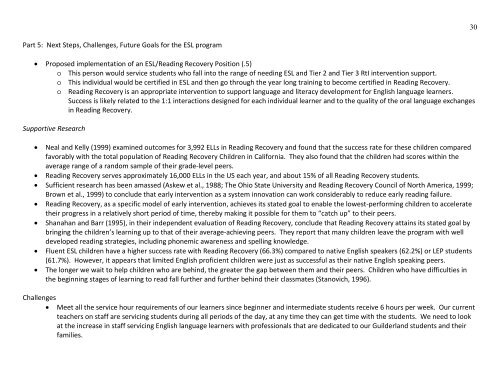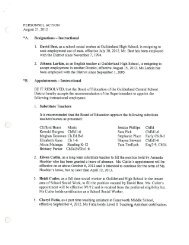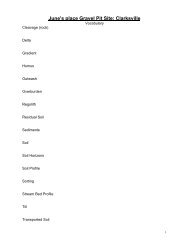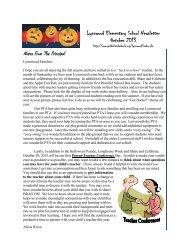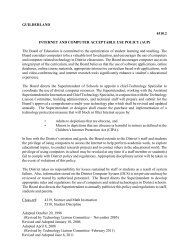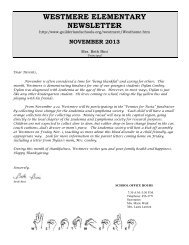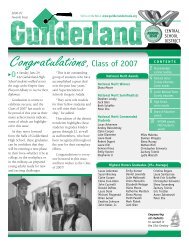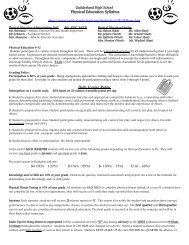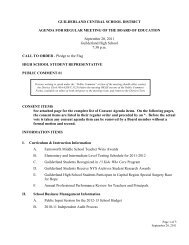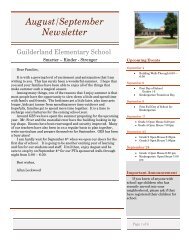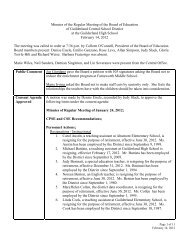English as a Second Language Program Evaluation - Guilderland ...
English as a Second Language Program Evaluation - Guilderland ...
English as a Second Language Program Evaluation - Guilderland ...
You also want an ePaper? Increase the reach of your titles
YUMPU automatically turns print PDFs into web optimized ePapers that Google loves.
30<br />
Part 5: Next Steps, Challenges, Future Goals for the ESL program<br />
• Proposed implementation of an ESL/Reading Recovery Position (.5)<br />
o This person would service students who fall into the range of needing ESL and Tier 2 and Tier 3 RtI intervention support.<br />
o This individual would be certified in ESL and then go through the year long training to become certified in Reading Recovery.<br />
o Reading Recovery is an appropriate intervention to support language and literacy development for <strong>English</strong> language learners.<br />
Success is likely related to the 1:1 interactions designed for each individual learner and to the quality of the oral language exchanges<br />
in Reading Recovery.<br />
Supportive Research<br />
• Neal and Kelly (1999) examined outcomes for 3,992 ELLs in Reading Recovery and found that the success rate for these children compared<br />
favorably with the total population of Reading Recovery Children in California. They also found that the children had scores within the<br />
average range of a random sample of their grade-level peers.<br />
• Reading Recovery serves approximately 16,000 ELLs in the US each year, and about 15% of all Reading Recovery students.<br />
• Sufficient research h<strong>as</strong> been am<strong>as</strong>sed (Askew et al., 1988; The Ohio State University and Reading Recovery Council of North America, 1999;<br />
Brown et al., 1999) to conclude that early intervention <strong>as</strong> a system innovation can work considerably to reduce early reading failure.<br />
• Reading Recovery, <strong>as</strong> a specific model of early intervention, achieves its stated goal to enable the lowest-performing children to accelerate<br />
their progress in a relatively short period of time, thereby making it possible for them to “catch up” to their peers.<br />
• Shanahan and Barr (1995), in their independent evaluation of Reading Recovery, conclude that Reading Recovery attains its stated goal by<br />
bringing the children’s learning up to that of their average-achieving peers. They report that many children leave the program with well<br />
developed reading strategies, including phonemic awareness and spelling knowledge.<br />
• Fluent ESL children have a higher success rate with Reading Recovery (66.3%) compared to native <strong>English</strong> speakers (62.2%) or LEP students<br />
(61.7%). However, it appears that limited <strong>English</strong> proficient children were just <strong>as</strong> successful <strong>as</strong> their native <strong>English</strong> speaking peers.<br />
• The longer we wait to help children who are behind, the greater the gap between them and their peers. Children who have difficulties in<br />
the beginning stages of learning to read fall further and further behind their cl<strong>as</strong>smates (Stanovich, 1996).<br />
Challenges<br />
• Meet all the service hour requirements of our learners since beginner and intermediate students receive 6 hours per week. Our current<br />
teachers on staff are servicing students during all periods of the day, at any time they can get time with the students. We need to look<br />
at the incre<strong>as</strong>e in staff servicing <strong>English</strong> language learners with professionals that are dedicated to our <strong>Guilderland</strong> students and their<br />
families.


